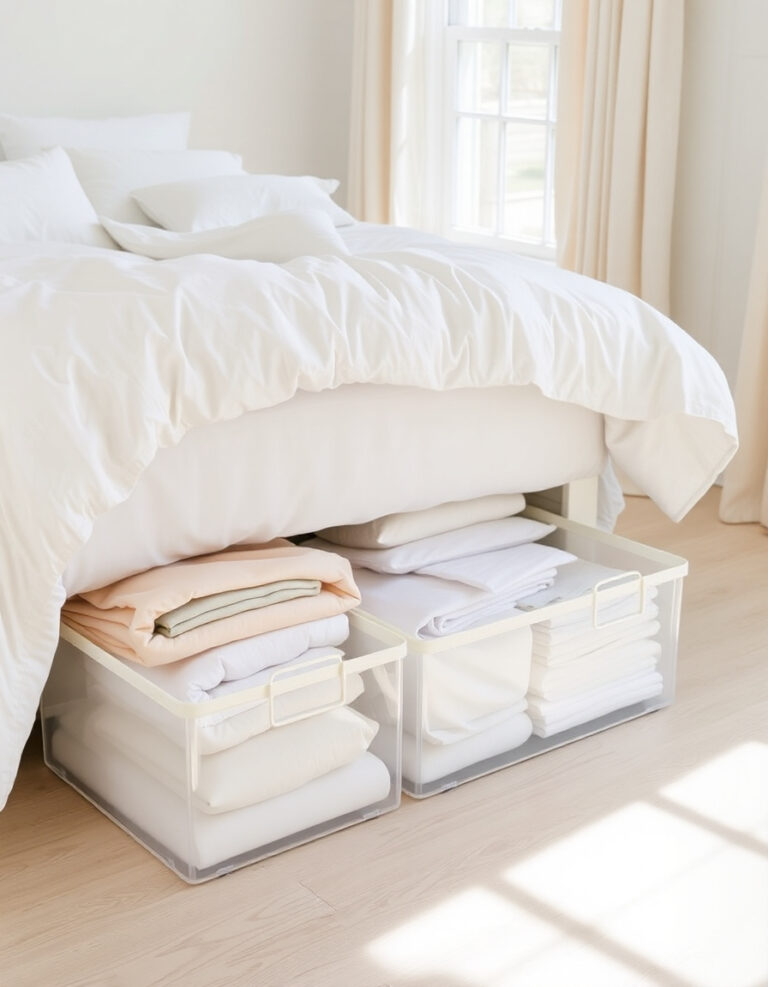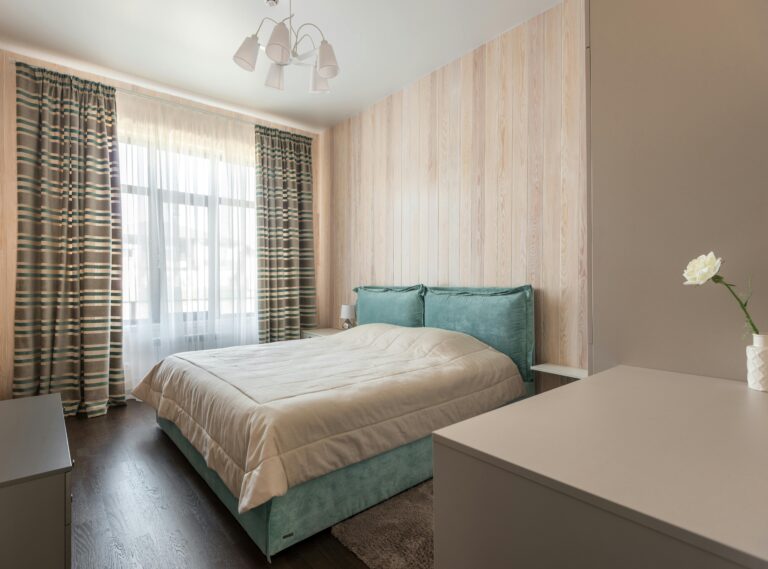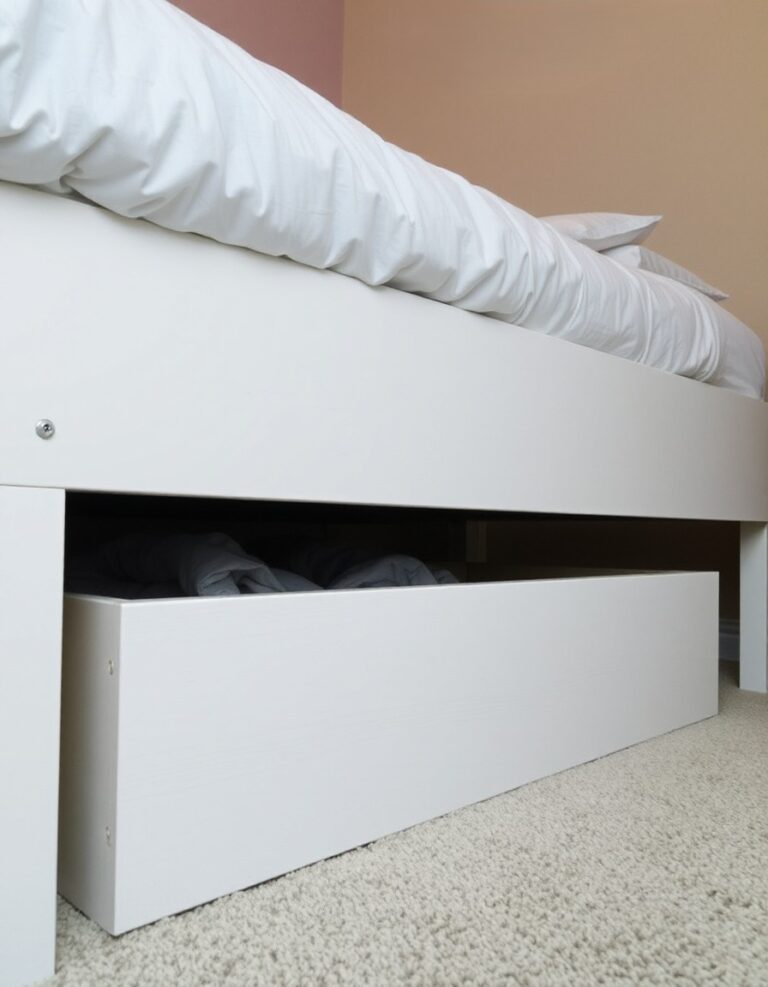Living in a narrow bedroom can feel challenging, but with the right strategies, you can maximize a narrow bedroom and create a functional, comfortable space that feels surprisingly spacious. Whether you’re dealing with a small apartment, a converted room, or just an awkwardly shaped space, these practical solutions will help you make the most of every square foot without breaking the bank on major renovations.
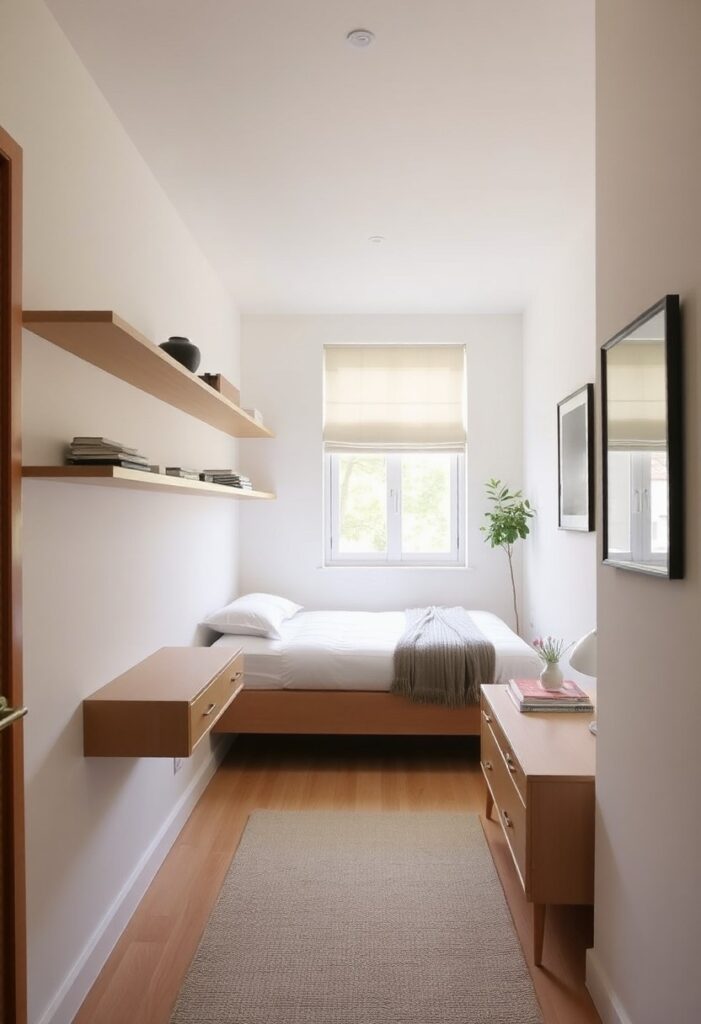
Understanding Your Narrow Bedroom Layout
Before diving into solutions, it’s essential to assess your space properly. Narrow bedrooms typically measure less than 10 feet in width and often present unique challenges like limited floor space, awkward furniture placement, and reduced natural light circulation. The key to success lies in working with your room’s proportions rather than against them.
Start by measuring your room’s dimensions and identifying the main traffic flow. This will help you understand which areas need to remain clear and where you can afford to place larger furniture pieces. Consider the location of windows, doors, and built-in features that cannot be moved.
Strategic Furniture Placement for Narrow Spaces
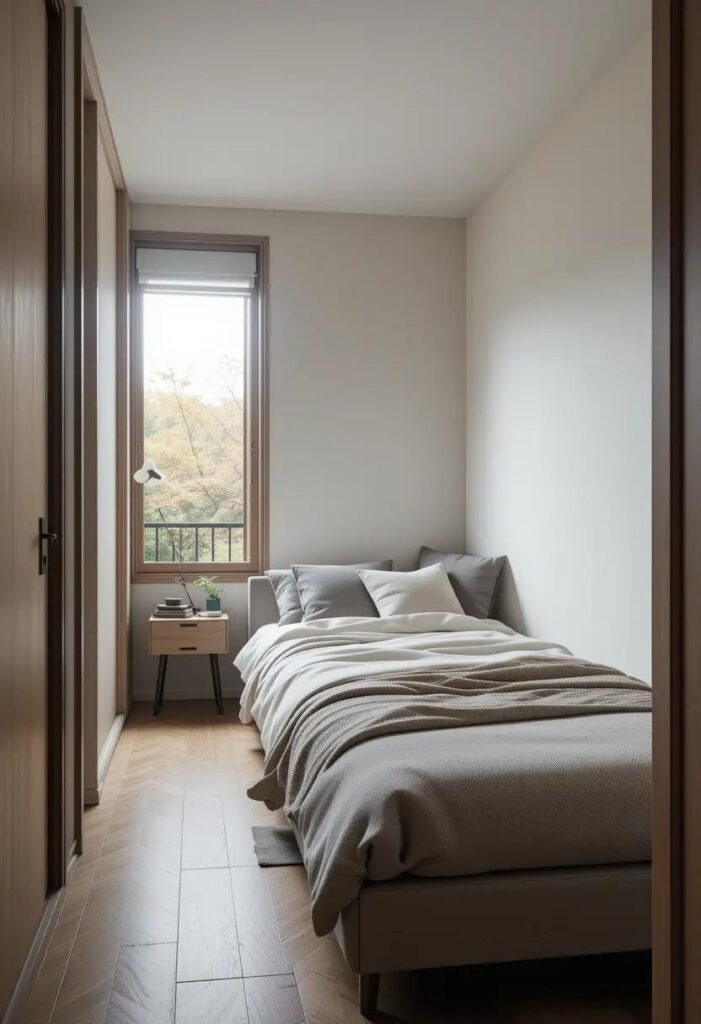
The foundation of maximizing a narrow bedroom starts with smart furniture arrangement. Instead of pushing everything against the walls, consider floating your bed in the center of the room if space allows. This creates the illusion of more space and provides access from both sides.
For extremely narrow rooms, place your bed lengthwise against the longest wall. This positioning leaves the center of the room open for movement and makes the space feel less cramped. If your room allows, position the bed at an angle to create more visual interest and break up the linear feel of the space.
Nightstands should be proportional to your room size. Instead of traditional bulky nightstands, opt for narrow console tables, wall-mounted shelves, or even small stools that can double as seating when needed.
Vertical Storage Solutions That Work
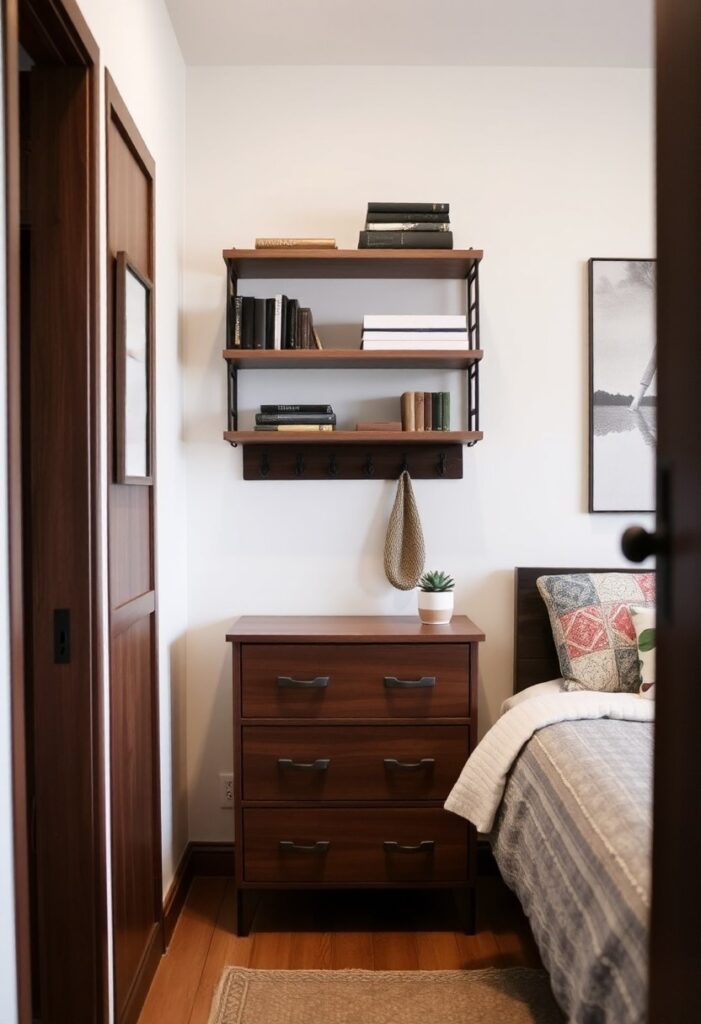
When floor space is limited, thinking vertically becomes crucial for narrow bedroom optimization. Install floating shelves along empty walls to store books, items, and everyday essentials. These shelves draw the eye upward and create the illusion of height.
Wall-mounted cabinets and hooks maximize storage without consuming floor space. Consider installing a series of hooks at different heights for clothing, bags, and accessories. This approach keeps frequently used items accessible while maintaining a clean, organized appearance.
Tall, narrow dressers work better than wide, low ones in these spaces. Choose furniture that extends upward rather than outward to maintain precious floor space while providing ample storage for clothing and personal items.
Multi-Functional Furniture Essentials
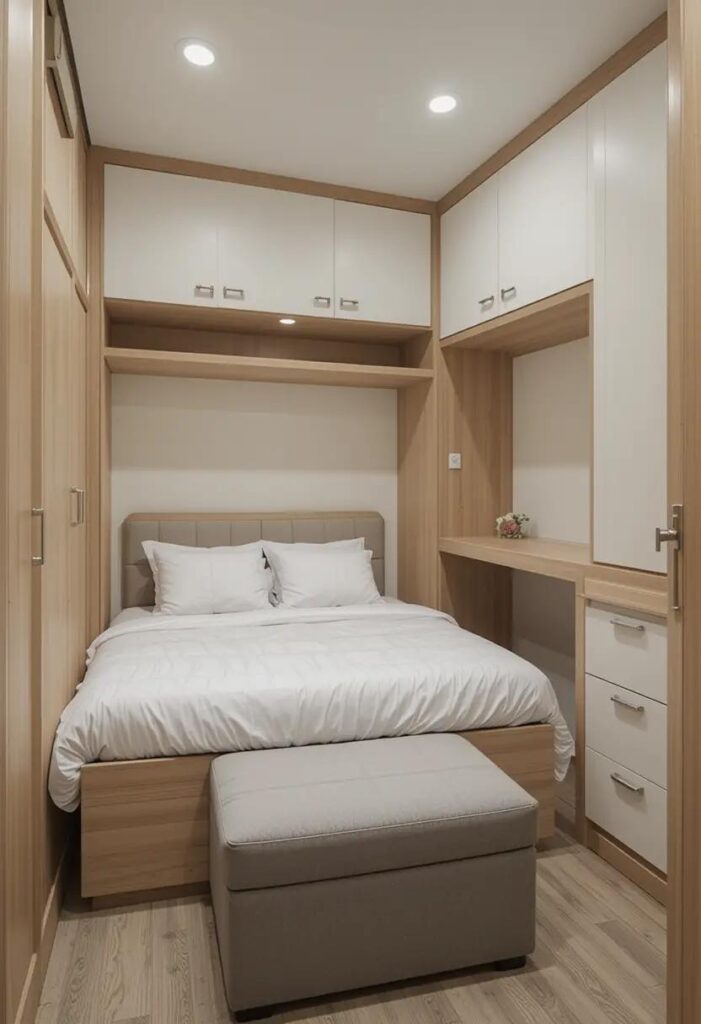
Investing in multi-functional furniture is perhaps the most effective way to maximize a narrow bedroom. An ottoman with built-in storage can serve as seating, a footrest, and a place to store blankets or seasonal clothing. Similarly, a bed frame with built-in drawers eliminates the need for additional storage furniture.
Consider a desk that doubles as a vanity, or a bench at the foot of your bed that opens to reveal storage space. Every piece of furniture should serve at least two purposes in a narrow bedroom to justify its footprint.
Wall-mounted folding desks are excellent for narrow bedrooms where a permanent workspace isn’t feasible. These desks fold flat against the wall when not in use, preserving valuable floor space while providing a functional work surface when needed.
Color and Lighting Strategies
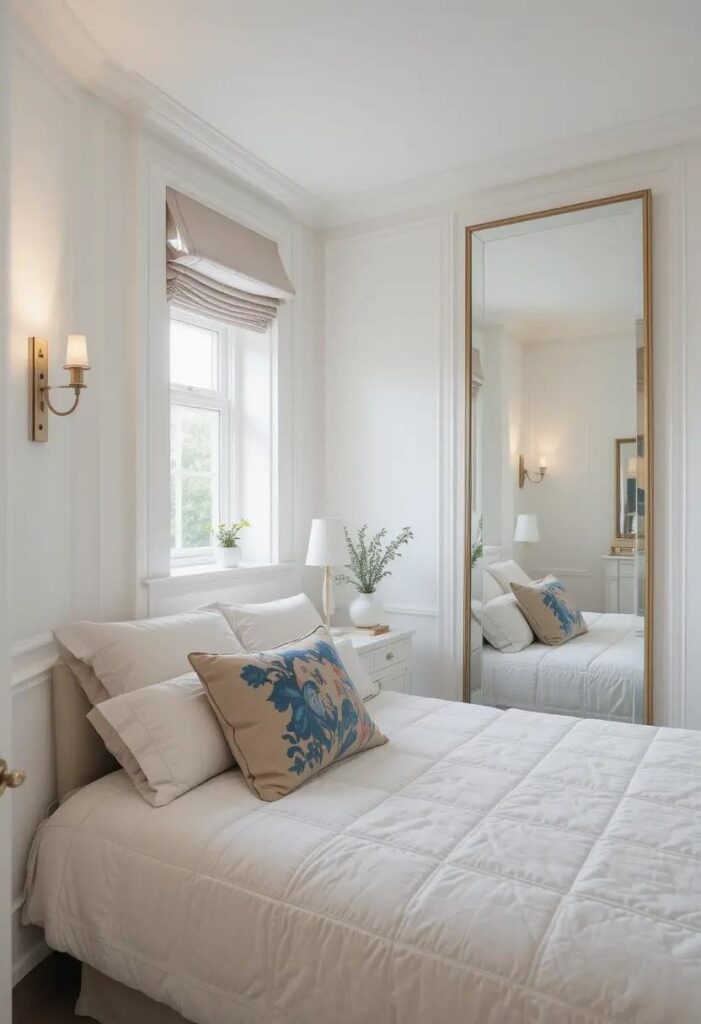
Light colors are your best friend when trying to maximize a narrow bedroom visually. Whites, soft grays, and pale pastels reflect light and create an airy feeling that makes the space appear larger. However, this doesn’t mean your room has to be boring – add personality through textiles, small accent pieces, and strategic pops of color.
Mirrors strategically placed can double the visual space of your narrow bedroom. Position a large mirror opposite a window to reflect natural light throughout the room. Multiple smaller mirrors can also create interesting visual effects while amplifying light and space.
Layer your lighting with multiple sources rather than relying on a single overhead fixture. Table lamps, wall sconces, and string lights create ambient lighting that makes the space feel warm and inviting while eliminating harsh shadows that can make narrow rooms feel even smaller.
Clever Storage Hacks for Small Spaces
Under-bed storage is often underutilized way to maximize space in a narrow bedroom. Use storage boxes, vacuum-sealed bags, or rolling containers to store seasonal clothing, extra bedding, or items you don’t need daily access to. This hidden storage keeps your room clutter-free while maximizing every available inch.
Install curtain rods or tension rods in unexpected places to create instant storage solutions. A rod mounted high on the wall can hold hanging storage organizers, while a rod across a corner can create a small closet area if your room lacks adequate closet space.
The space behind your bedroom door is prime real estate for storage. Over-the-door organizers, hooks, and narrow shelving units can hold shoes, accessories, or cleaning supplies without interfering with the door’s function.
Creating Visual Flow and Movement
Maintaining clear pathways is essential when you maximize a narrow bedroom. Ensure there’s always a clear route from the door to the bed and to any windows. This flow prevents the room from feeling cramped and claustrophobic.
Use rugs strategically to define different areas within your narrow bedroom. A small rug beside the bed can define the sleeping area, while a runner along the length of the room can emphasize the space’s dimensions and create visual continuity.
Avoid blocking windows with furniture whenever possible. Natural light is crucial for making narrow spaces feel larger and more inviting. If you must place furniture near windows, choose low-profile pieces that don’t obstruct the light flow.
Window Treatments That Enhance Space
Choose window treatments that maximize natural light while maintaining privacy. Sheer curtains or light-filtering blinds allow light to enter while providing necessary privacy. Avoid heavy, dark curtains that can make a narrow room feel even more confined.
Mount curtain rods close to the ceiling and extend them beyond the window frame to create the illusion of larger windows and higher ceilings. This technique also allows more light to enter the room when curtains are open.
Consider top-down, bottom-up cellular shades that provide privacy while still allowing natural light to filter through the top portion of the window. This solution is particularly effective for narrow bedrooms where privacy is important but natural light is limited.
Organizing and Decluttering Techniques
Regular decluttering is essential for maintaining a functional narrow bedroom. Adopt a minimalist approach by keeping only items you use regularly or truly love. This discipline prevents the accumulation of unnecessary items that can quickly overwhelm a small space.
Implement the “one in, one out” rule to prevent your narrow bedroom from becoming cluttered again. For every new item you bring into the space, remove something else to maintain balance and prevent overcrowding.
Use drawer dividers, small bins, and organizers to keep belongings tidy and easily accessible. An organized narrow bedroom always appears larger than a cluttered one, regardless of the actual square footage.
Making Your Narrow Bedroom Feel Welcoming
Personal touches make any space feel like home, including narrow bedrooms. Choose a few meaningful decorative items rather than many small accessories that can create visual clutter. A single statement piece often has more impact than multiple smaller items.
Plants can add life and color to narrow bedrooms while improving air quality. Choose varieties that thrive in your room’s lighting conditions and don’t require large pots that consume floor space. Wall-mounted planters or hanging plants are excellent options for narrow spaces.
Create a focal point that draws attention away from the room’s narrow proportions. This could be a striking headboard, a piece of wall decor, or an interesting light fixture that becomes the room’s centerpiece.
Frequently Asked Questions
Q: What’s the best bed size for a narrow bedroom? A: For most narrow bedrooms, a full or queen-size bed works best. Twin beds are too small for most adults, while king beds often overwhelm narrow spaces. Choose based on your room’s specific dimensions, ensuring you can walk comfortably around the bed.
Q: Should I put my bed in the center of a narrow room? A: This depends on your room’s width. If your narrow bedroom is at least 10 feet wide, centering the bed can work well. For rooms narrower than 10 feet, placing the bed against the longest wall usually provides better functionality and flow.
Q: How can I create a closet in a narrow bedroom without one? A: Use a curtain rod or room divider to section off a corner of the room. Install a clothing rod and add shelving above and below for a functional closet area. Alternatively, use a wardrobe or armoire that fits your room’s proportions.
Q: What colors make a narrow bedroom look bigger? A: Light, neutral colors like white, cream, pale gray, and soft pastels reflect light and create an airy feeling. However, you can add personality with colorful accents through bedding, pillows, and small decorative items.
Q: Is it okay to put a desk in a narrow bedroom? A: Yes, but choose wisely. Wall-mounted folding desks, narrow console tables, or corner desks work best. Ensure the desk doesn’t block natural light or create cramped walkways. Consider multi-functional pieces that serve as both desk and vanity.
Q: How do I make a narrow bedroom feel less cramped? A: Focus on vertical storage, use light colors, maximize natural light, keep pathways clear, and maintain a minimalist approach to decorating. Strategic mirror placement and good lighting also help create the illusion of more space.

